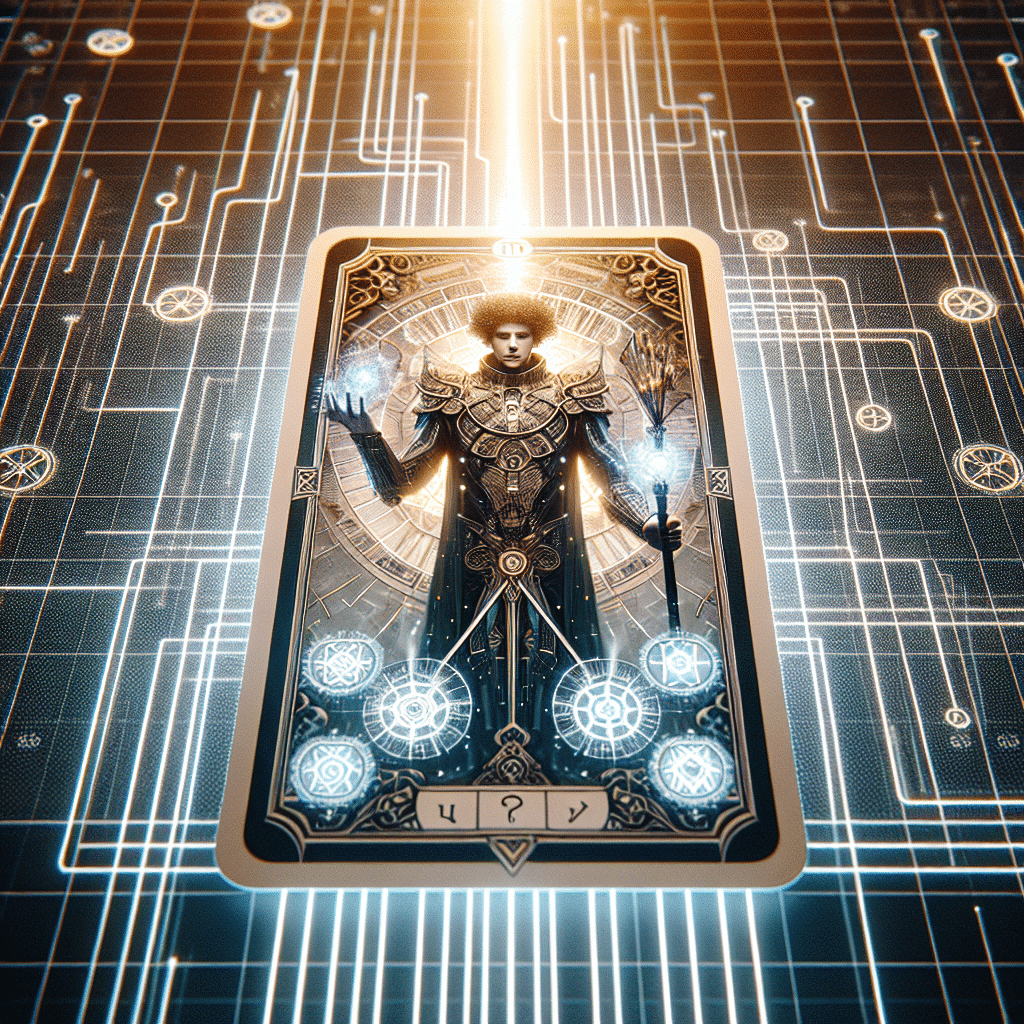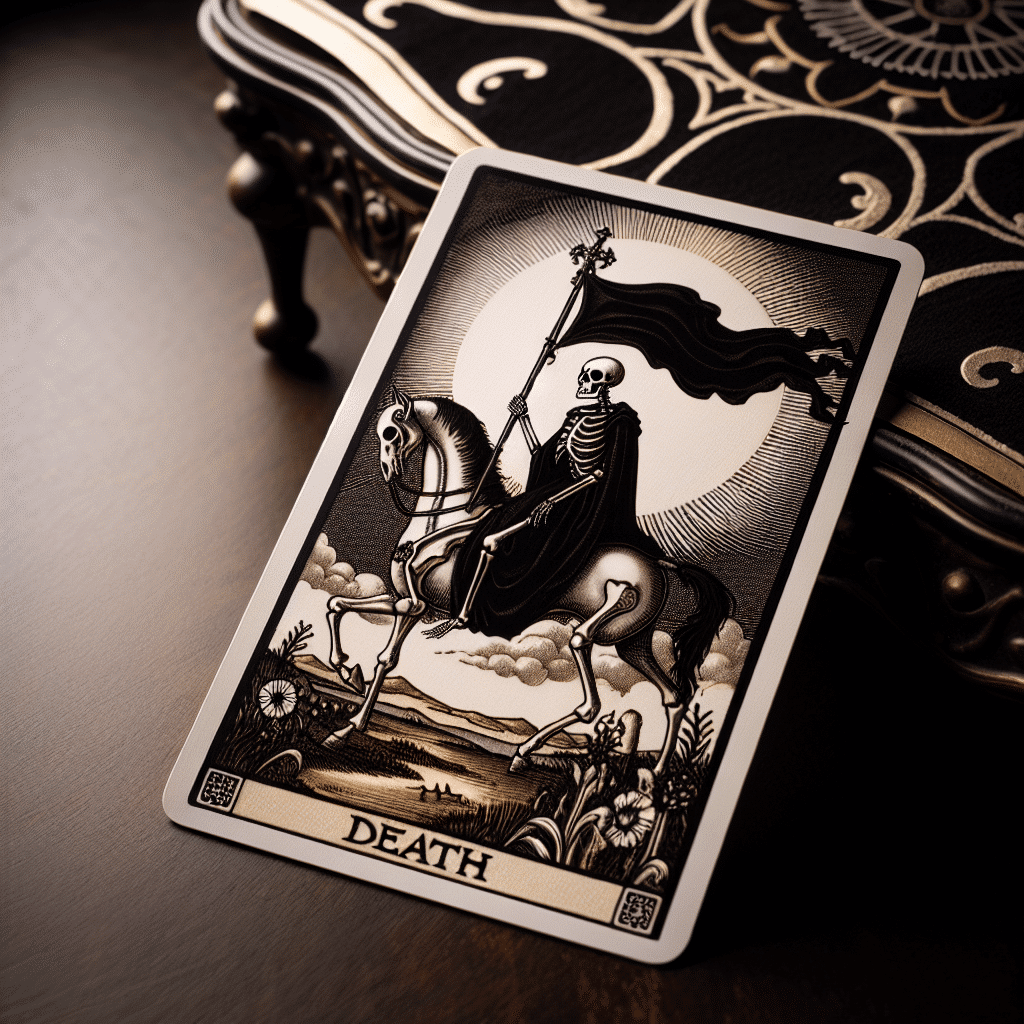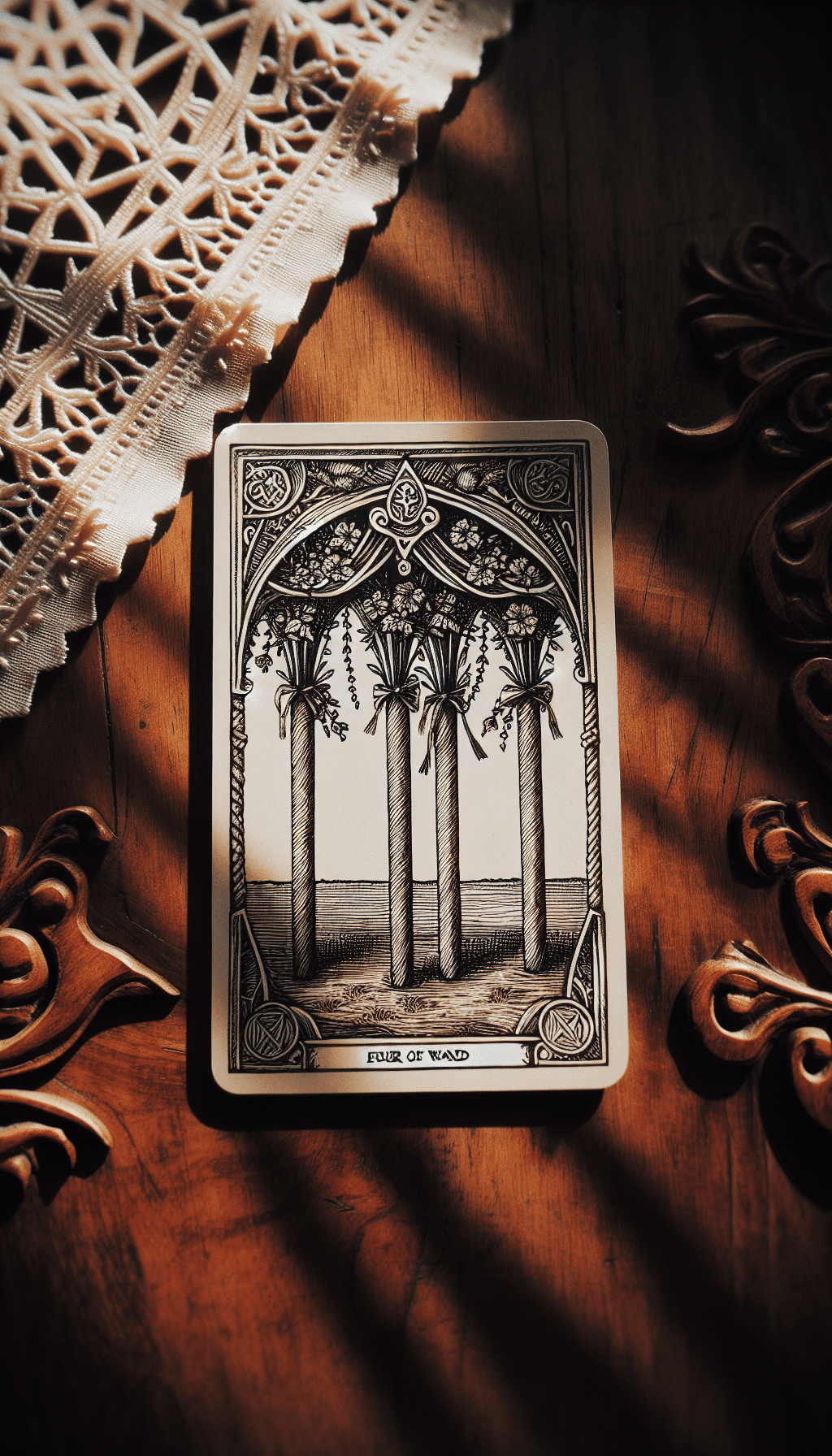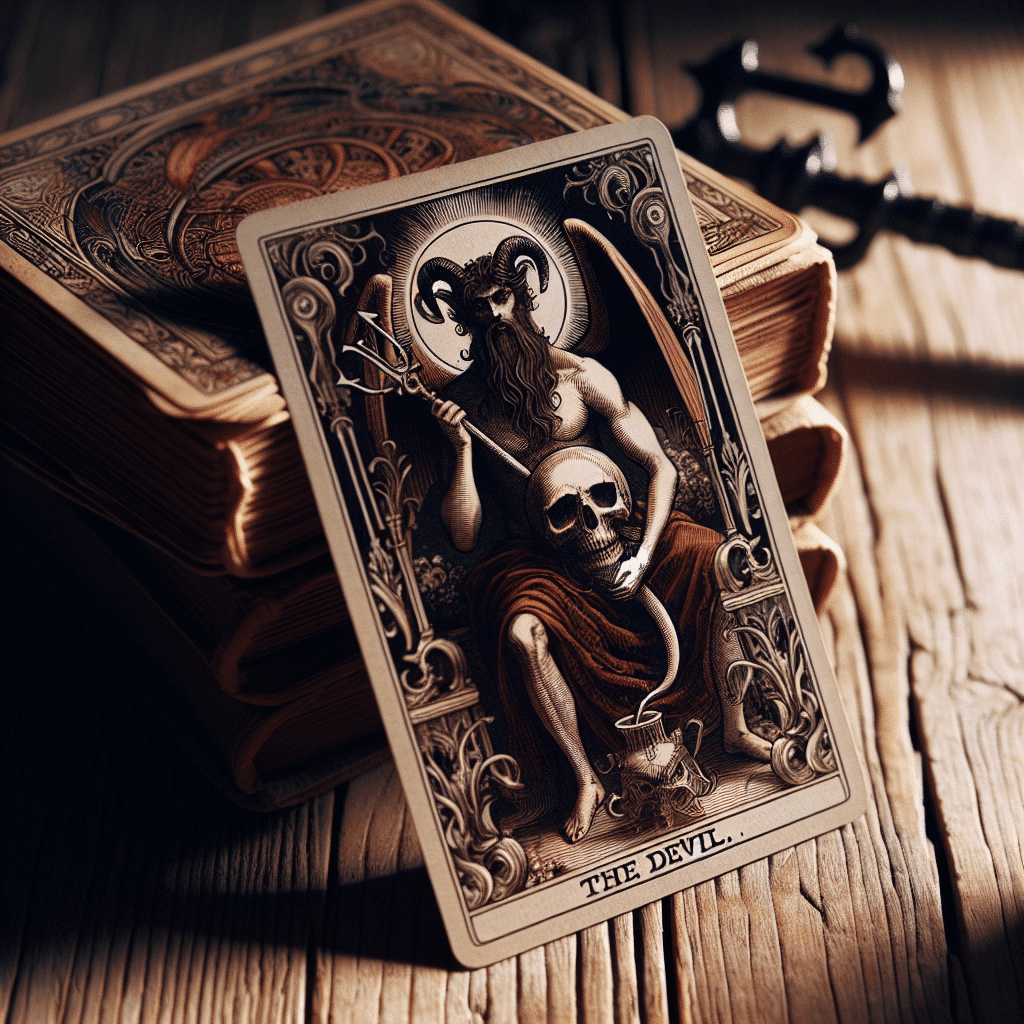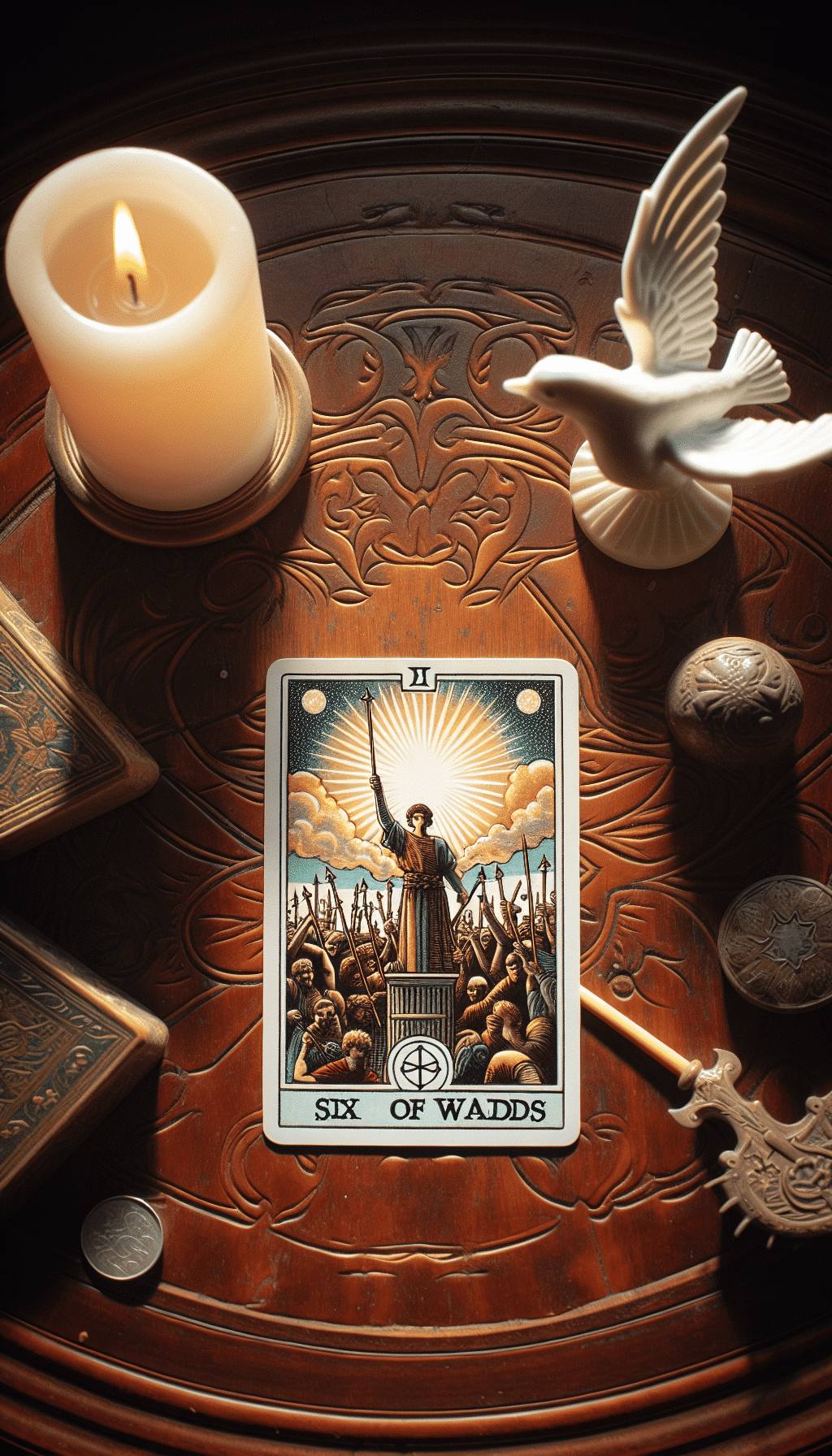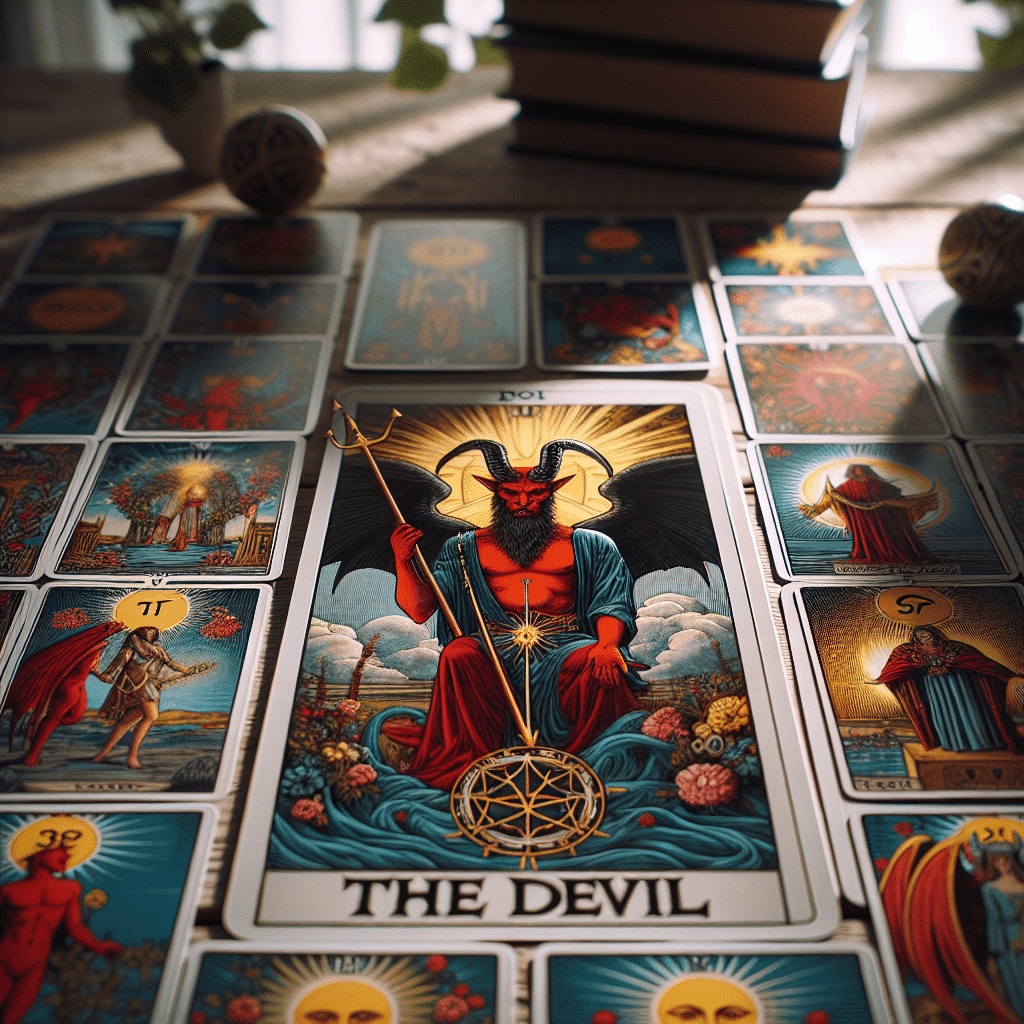
When it comes to conflict resolution, understanding power dynamics is crucial for finding solutions that lead to positive outcomes for all parties involved. The Devil tarot card, although often associated with negative connotations such as bondage and restriction, can offer valuable insights into the complexities of power struggles and temptations in conflict situations.
General Meaning
When it comes to conflict resolution, The Devil tarot card holds a significant meaning that can shed light on the dynamics at play. In tarot readings, The Devil is often associated with bondage, restriction, and temptation. This card symbolizes the ways in which we can feel trapped by negative patterns, toxic relationships, or destructive behaviors.
In conflict resolution, The Devil card can point to power struggles, control issues, or dominant-submissive dynamics that may be at the core of the disagreement. It suggests that there are underlying forces at play that are causing tension and preventing resolution.
Understanding The Devil card in conflict resolution involves recognizing where power imbalances lie and how they are influencing the situation. It may indicate that one party is trying to exert control over the other, or that both parties are feeling trapped in a cycle of manipulation or coercion.
By acknowledging The Devil card’s presence in a conflict, individuals involved can begin to address the deeper issues at hand. This may involve breaking free from oppressive influences, confronting fears of loss or change, and reframing perspectives to find a path to resolution.
Overall, The Devil card serves as a reminder to look beyond the surface of a conflict and explore the underlying power dynamics at play. By delving into the complexities of control, restriction, and temptation, individuals can gain insights into how to navigate through conflict and find a way towards resolution.
Variants
When it comes to The Devil tarot card, there are various depictions in different tarot decks. Each variation may present slightly different imagery, symbolism, or themes that can impact the interpretation of the card in conflict resolution.
Different Depictions
The Devil card can be portrayed in diverse ways, such as a demonic figure with chains, people in bondage, or symbols of temptation like fruit or flames. The variations in imagery can evoke different emotions and associations, influencing how the card is understood in a conflict resolution context.
Interpretations
For example, a more traditional depiction of The Devil card with figures in chains may suggest feelings of being trapped or restricted in a conflict situation. In contrast, a modern interpretation that focuses on temptation could highlight how desires or impulses play a role in the conflict.
Examples
In conflict resolution, these different interpretations can guide how individuals approach power dynamics. If the focus is on bondage and restriction, it may indicate a need to break free from oppressive influences or patterns. On the other hand, an emphasis on temptation could suggest exploring hidden motivations or addressing underlying desires to resolve the conflict.
Understanding the nuances of The Devil card in its various forms can provide valuable insights into the complexities of power dynamics in conflict resolution. By considering the different interpretations and symbolism, individuals can gain a deeper understanding of the forces at play and navigate through challenging situations with clarity and insight.
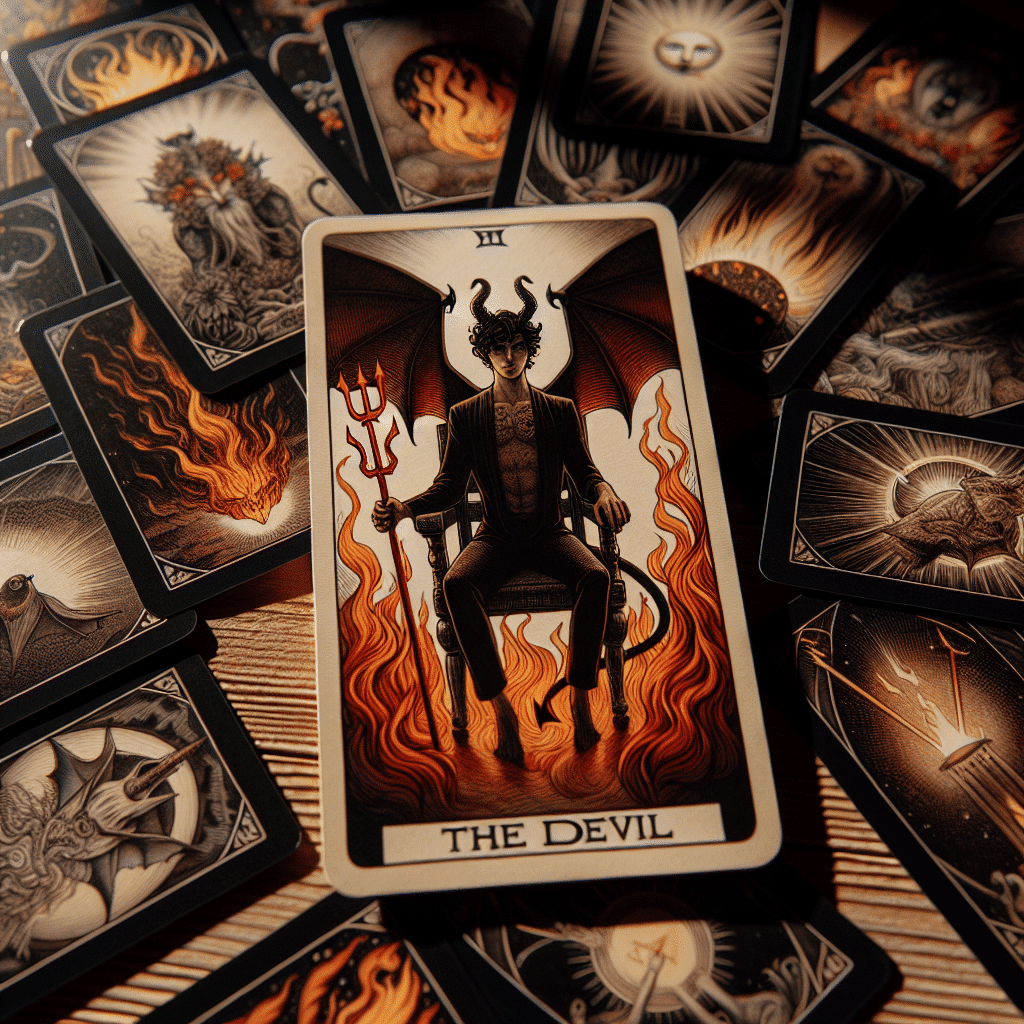
When it comes to conflict resolution, addressing power dynamics is essential for reaching a successful resolution. Here are some strategies for navigating through feelings of control or restriction:
Recognize and Address Power Imbalances
It’s important to identify any power imbalances that exist within the conflict. This could be based on factors such as role, authority, or influence. By acknowledging these imbalances, you can work towards creating a more equitable resolution process.
Develop Empathy and Understanding
Empathy plays a crucial role in conflict resolution, as it helps you understand the perspectives and motivations of others involved. By putting yourself in the shoes of the opposing party, you can gain insights that may lead to a more constructive dialogue.
Practice Active Listening
Active listening involves fully engaging with the speaker and seeking to understand their point of view. By demonstrating that you are actively listening and validating their concerns, you can create a more open and trusting environment for conflict resolution.
Encourage Collaboration
Instead of approaching the conflict as a win-lose situation, strive for collaboration and problem-solving together. By working towards a solution that meets the needs and interests of all parties involved, you can create a more sustainable and mutually beneficial outcome.
Break Free from Negative Patterns
If the conflict is rooted in negative patterns or toxic influences, it’s important to break free from these destructive cycles. This may involve setting boundaries, seeking outside help, or making difficult decisions to ensure your well-being and growth.
Embrace Personal Empowerment
Ultimately, conflict resolution is about empowering yourself and others to communicate effectively, address underlying issues, and work towards a positive outcome. By embracing your personal power and seeking resolution through understanding power dynamics, you can navigate conflicts with confidence and resilience.
Advice
When facing conflict resolution, it is crucial to address the power dynamics at play to achieve a successful resolution. The Devil tarot card serves as a reminder of the bondage and restrictions we may face in these situations, emphasizing the importance of recognizing and navigating through feelings of control or manipulation.
Strategies for addressing power dynamics in conflict resolution
One approach to dealing with power imbalances in conflict resolution is to promote open and honest communication. Encouraging all parties to express their perspectives and concerns can help level the playing field and foster mutual understanding. Additionally, actively listening to each other without judgment can lead to a more empathetic and constructive dialogue.
Recognizing and navigating through feelings of control or restriction
It is essential to recognize when power dynamics are at play in a conflict situation, whether it be through dominance, manipulation, or other forms of control. By acknowledging these dynamics, individuals can work towards addressing them and finding common ground for resolution. Avoiding temptations to exert power unfairly and being mindful of the impact of one’s actions are key steps in overcoming these challenges.
Breaking free from negative patterns and toxic influences
The Devil tarot card calls attention to the need to break free from negative patterns and toxic influences that may hinder conflict resolution efforts. This can involve examining underlying issues, setting healthy boundaries, and seeking external support or guidance when necessary. By taking proactive steps to address toxic elements in a conflict, individuals can work towards a more positive and empowering resolution.
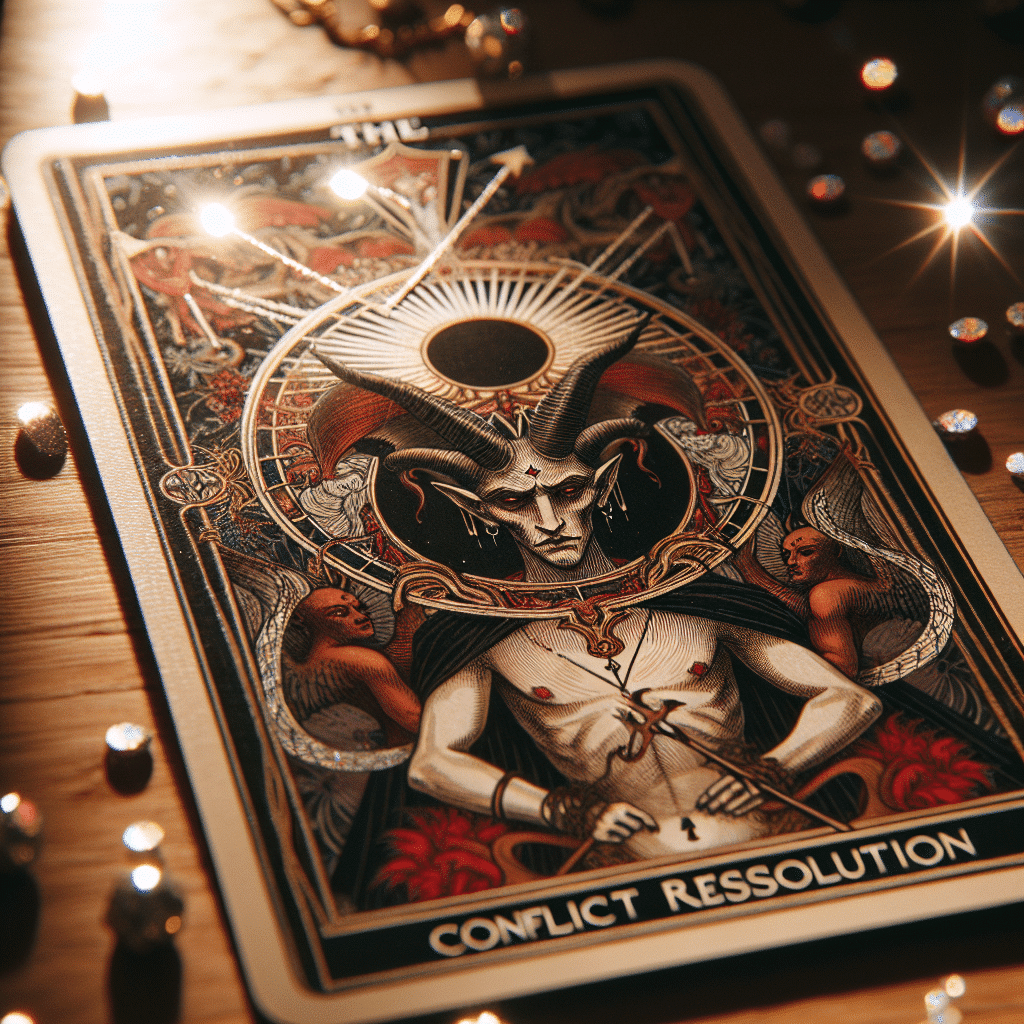 ## Conclusion
## Conclusion
The Devil tarot card holds a significant role in conflict resolution by highlighting power dynamics, bondage, and temptation. Understanding the various interpretations and depictions of this card can provide valuable insights into addressing control, restriction, and toxic influences in conflicts. By recognizing and navigating through feelings of entrapment, individuals can empower themselves to break free from negative patterns and work towards resolution. Embracing personal empowerment and strategies for addressing power dynamics are essential in overcoming challenges and seeking positive outcomes in conflict resolution.


